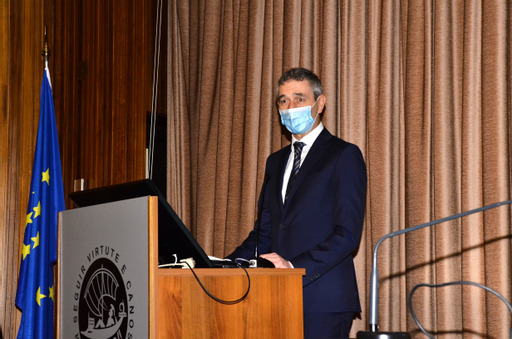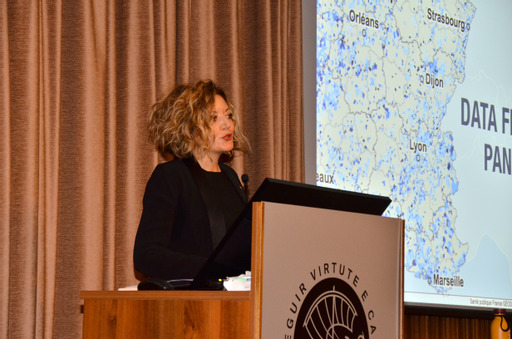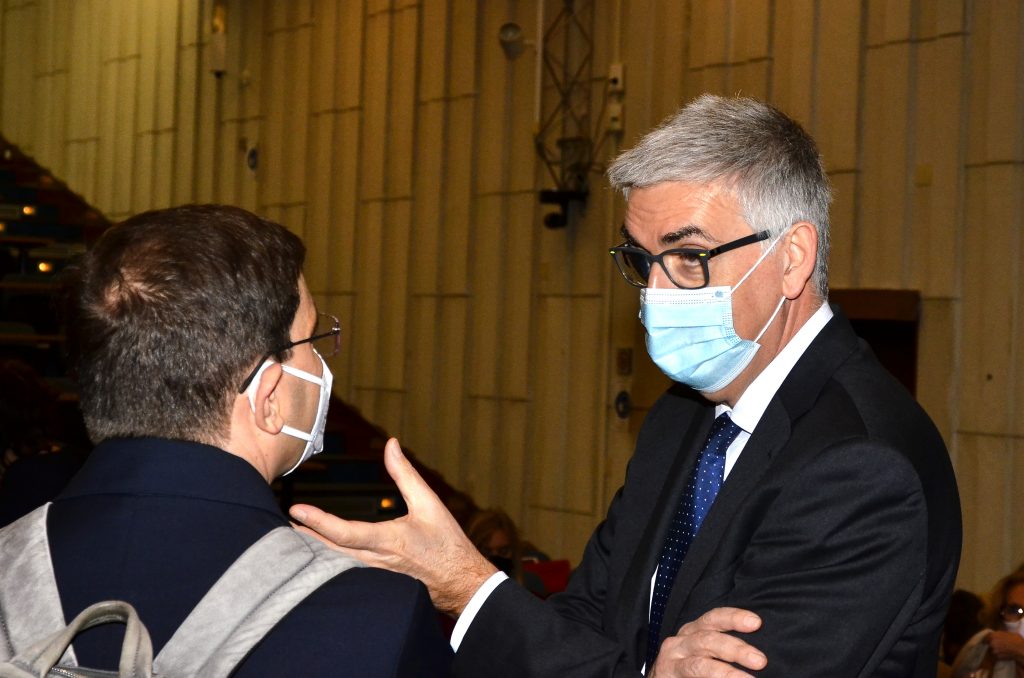by In Trieste
Photographs courtesy of Keiron Mayora
This Wednesday, November 17th, SISSA’s Aula Magna hosted the opening ceremony of the 2021-22 Academic Year, the 43rd since the foundation of the University.

“I’m excited to be here today and to be part or the inauguration of the new academic year,” said Trieste’s deputy mayor Serena Tonel. “After the pandemic which has slowed down our schools in so many ways, we can finally get back to the classrooms. The fact that we’re here today is the first step towards going back to normalcy in so many ways.”

Regional councilor for research and innovation, Alessia Rosolen underlined the importance of research and funding in Friuli Venezia Giulia. “We are proud to be the region with the capital city of Trieste which has many times been proclaimed the city of science. FVG will always be ready to seize the opportunities of research as for example the opportunity to apply for the European digital hub nomination in the coming year.”
The councilor finished by saying that “FVG region has showed that it trusts SISSA completely to bring our region to the highest possible level in research.”

The President of Istituto Superiore di Sanità Silvio Brusaferro talked about the ongoing pandemics saying that the state of emergency in Italy will definitely be prolonged and it has had and will have an impact on research all over Italy. “FVG risks going back to yellow zone. We are worried but we are also busy promoting vaccines as the only way to fight this horrible pandemics. I give my heartfelt thanks to all of the scientists working on vaccines and thus on making this region and the rest of Italy safer.”

SISSA’s Director Andrea Romanino welcomed the new students as well as the old ones praising all of the scientists thanks to whom getting the necessary vaccinations is possible. “The new normal means we appreciate ever more the opportunity to get vaccinated and make our classrooms a safer place for all.”
Romanino underlined that “17 November also marks the beginning of the new National Conference in Science Communication organised by SISSA’s Interdisciplinary Laboratory. Until 20 November, the four-day event will be rich in appointments. Incidentally, this is also the course we’ve been offering here at SISSA for the past thirty years and which we’re really proud of. We believe that Italy finally begins to understand the importance of doctorate degree as the necessary step to innovation.”
Romanino was followed by Lectio Magistralis, entitled “Data Fighting Pandemics”, given by Computational Scientist Vittoria Colizza, Research Director at INSERM in Paris.

“The main difference from last winter is that the high vaccination coverage is now a weapon to widen the gap between the increase rate of new cases and that of hospitalizations. In other words, a weapon to protect the population. The increase in the number of cases we are witnessing signals the start of a new wave, which we expected as winter is known to facilitate transmission, due to weather conditions and changes in behavior (for example we spend more time indoors, often with closed windows). “
The speeches were followed by a conversation with the Italian Minister of University and Research Maria Cristina Messa and the President of Istituto Superiore di Sanità Silvio Brusaferro, moderated by the Corriere Innovazione journalist Massimo Sideri.

“Scientific communication came into focus during the pandemics. There are however no exact formulas to direct communication, thus fake news happens. Many times the information can take a course of its own ans come “disinformation”, opened the talk Massimo Sideri.
“Scientific communication is definitely different from what we are used to,” responded Messa. “When we don’t know where the news comes from, we don’t trust is as easily. I strongly believe there should be courses in science communication in schools.”
“For many of us the culture of Internet is new and the way the news travels, its velocity or origin can be incomprehensible, ” commented Sideri.
“We need to be able to communicate in a clear and concise manner,” added Brusaferro. “From one point, we need to communicate in a traditional manner. From another, we need to be able to learn fast. For example, our communication during pandemics changed a lot.”
What did SISSA students think about the event?





























